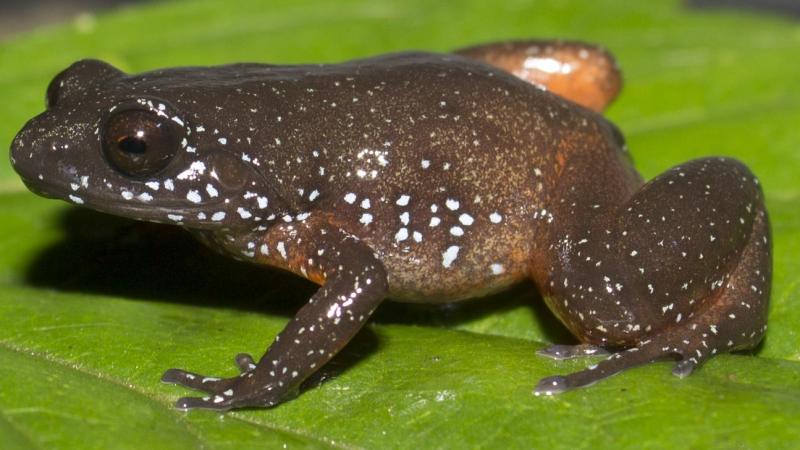
Almost a decade ago, in 2010, Dr SP Vijayakumar and Dr Kartik Shanker, researchers from the Indian Institute of Science, Bengaluru, came across a distinct, spotted frog in Wayanad in Kerala, during their large-scale survey of the Western Ghats. Back then, this frog stood out from any of the known ones in this region. Today, it has a name, Astrobatrachus kurichiyana, thanks to a recent study published by an international collaboration of researchers, including the two above.
Unlike many of the recently-discovered frogs from the Western Ghats, which are mostly a new species from a genus already known, Astrobatrachus kurichiyana, belongs to a new genus and a sub-family. It gets a part of its name from the Greek words for the star, ‘astro’, and frog, ‘batrachus’, referring to the starry appearance of the white spots on its body. The name of the species, kurichiyana honours the members of the ‘Kurichiya’ tribes of Wayanad, where the specimens of this frog were first found.
In the study, published in the journal PeerJ, researchers from IISc, along with those from the Zoological Survey of India, Pune, and USA’s George Washington University and Florida Museum of Natural History, carried out morphological, genetic and molecular analysis to classify the species appropriately. Molecular analysis suggests that the species was formed around 60 to 70 million years ago when it diversified from a common ancestor.
Currently, Astrobatrachus kurichiyana is only known to exist on the Kurchiyarmala peak of Wayanad, under the leaf litter below a thick canopy of trees. It has triangular finger and toe tips, resembling many of the frogs found in South America and Africa. Its closest relatives are the frogs belonging to the family Nyctibatrachinae, which includes the Jog Night frog, also found in the Western Ghats, and the family Lankanectinae, found in Sri Lanka.
The description of this species, along with the other amphibian discoveries from the Western Ghats, inspire awe at what other animals are yet to be found in these thick jungles. They also bring to light the importance of these habitats in the evolutionary time scale.





